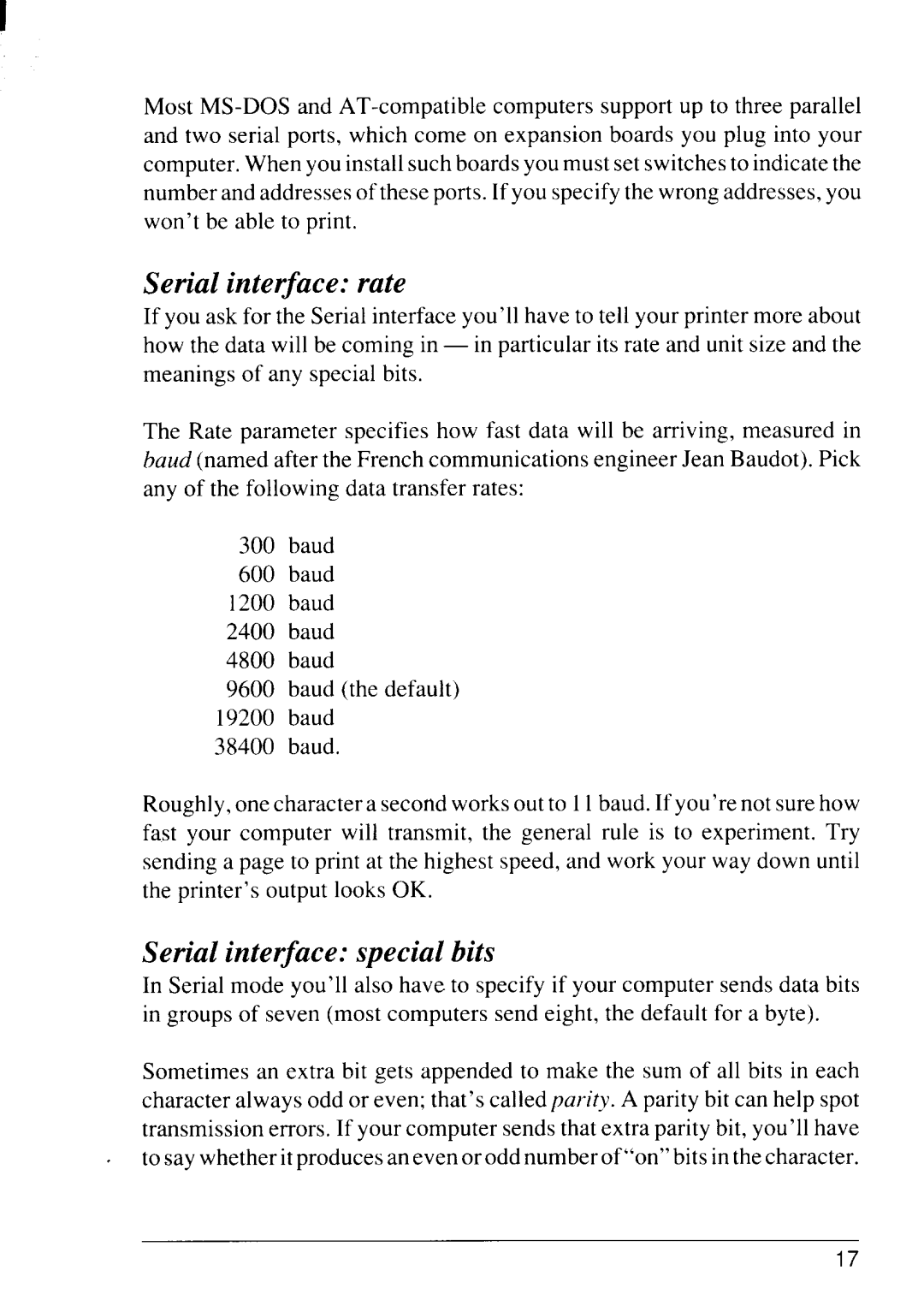
Most
Serial interface: rate
If you ask for the Serial interface you’ll have to tell your printer more about how the data will be coming in — in particular its rate and unit size and the meanings of any special bits.
The Rate parameter specifies how fast data will be arriving, measured in baud (named after the French communications engineer Jean Baudot). Pick any of the following data transfer rates:
300baud
600baud
1200 baud
2400 baud
4800 baud
9600 baud (the default)
19200 baud
38400 baud.
Roughly, one character a second works out to 11baud. If you’re not sure how fast your computer will transmit, the general rule is to experiment. Try sending a page to print at the highest speed, and work your way down until the printer’s output looks OK.
Serial interface: special bits
In Serial mode you’ll also have to specify if your computer sends data bits in groups of seven (most computers send eight, the default for a byte).
Sometimes an extra bit gets appended to make the sum of all bits in each character always odd or even; that’s called parity. A parity bit can help spot transmission errors. If your computer sends that extra parity bit, you’ll have to say whether it produces anevenorodd number of “on” bits in the character.
17
